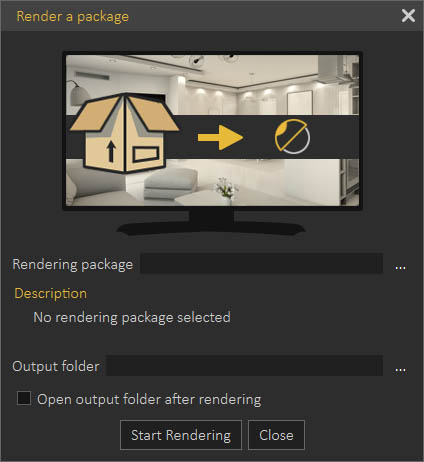Having large 3d scenes can be demanding for even high end computers. Nonetheless rendering an animated video out of such scenes consumes a lot more time than intended. When this issue is critical we can treat it in several ways; such as Rendering Packages (Distributed Rendering) or Cloud Rendering.

Distributed Rendering is one of the treatments that allows you to hugely cut your production time dividing load across available machines. Simlab Composer software can grant you this method in a very friendly set of steps. Follow the video bellow to learn how to apply these steps.
Once you finish up with rendering from every active PC, you get a set of images for each rendered frame. You can use the Composer’s own Movie Maker to make an MP4 video output from the images sequence.



Make sure to select the same frame rate you intended when animating your scene. 30fps is most common across cinematic videos. If you are looking to get smoother animations 60fps is a good option, you can also go higher. The higher the frame-rate we intend the more time we need to render.

This method can help you out in scattering your workload across different times on the same PC.
You can read more and learn about our renderer here.
To get to know more about creating your own HDRI, read the post here.
Also learn more about Simlab Composer’s capabilities and fields of production here.
-

1 SolidWorks Properties Integration with SimLab Composer
-

2 Multiple objects interaction in VR using Templates.
-

3 Scene Optimization in SimLab Composer
-

4 Automated Doors and Cabinets Animation
-

5 Approaches to automatically do things with SimLab Composer
-

6 Efficient VR Sharing with ShareBack
-

7 Organic Models Animation in SimLab Composer
-

8 VR Guide Animation For Training and Education
-

9 VR for NX / CREO files
-

10 Animated Characters and Organic Models

